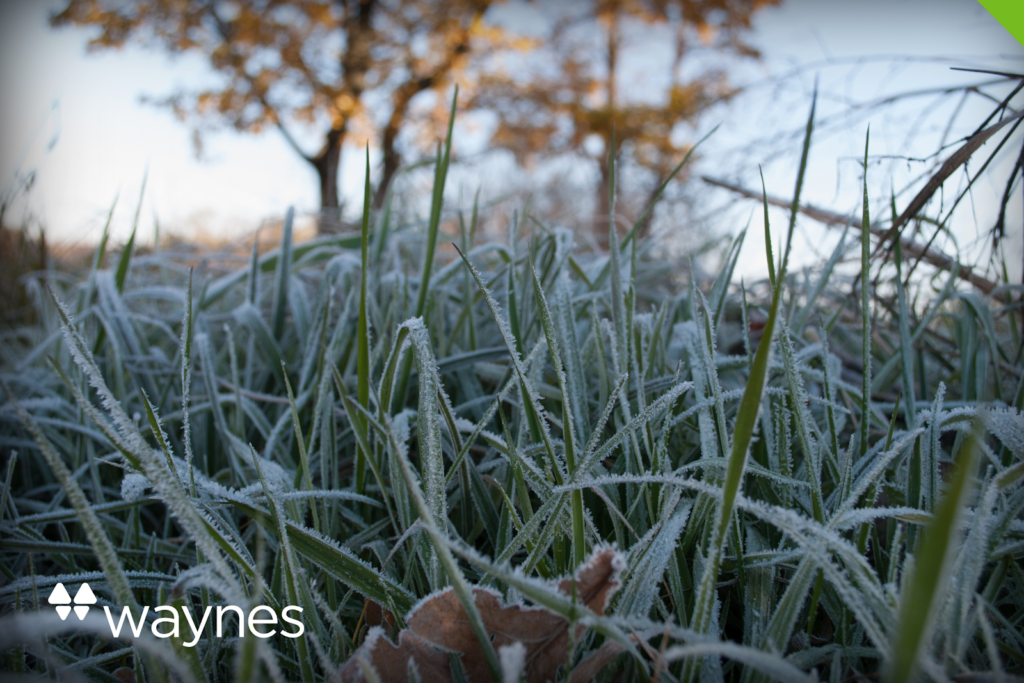Every year when the weather cools down and the days grow shorter, many varieties of grass slowly transition from green to shades of brown and yellow. While this seasonal change is natural, dead grass does, at least on the surface, look similar to that which is just taking a winter’s nap.
First, let’s be clear: Healthy warm-season grasses, such as Bermuda and zoysia, don’t die in the winter, they just go dormant for the cold months to conserve water and nutrients for spring’s arrival. However, there are a number of factors that can seriously impact grass, such as nutrient deficiencies, too much or not enough moisture, and how it’s been cut over the summer.
So, how can you determine if your lawn is sick or just hibernating? And what should you do to make sure you get that lovely, lush lawn back in the spring? The lawn care experts at Waynes prepared the following to help get you pointed in the right direction.
Is My Grass Dead, or Just Dormant?
You may be thinking, “Nope, that grass looks pretty dead.” If that’s the case, you’ll need to replace the grass through seeding or sodding. The good news is, though, there’s a much better chance your lawn is just hibernating. There are a few ways you can check your grass to determine if it is dormant or dead.
- Grab a small patch of grass and give it a slight tug. If it comes up easily, it may be dead.
- The roots, however, can tell you a little more. White roots indicate dormancy, while brittle and gray roots are typically an indication of diseased or dead grass.
Another indication: If, prior to the entire lawn going dormant, you noticed brown patches in your lawn — these often indicate the presence of disease or pests that may very well spread. Again, if your entire lawn is turning brown, especially during winter, this is a common sign of dormancy.
Dormant grass will also become green again once the weather warms and conditions become better suited for lawn growth. However, if you aren’t caring for your grass correctly during the winter months, come spring — it may be too late.
How Should I Care for My Grass During the Winter?
There are a few key actions you can take to nurture your grass during its dormant phase. Even though it’s essentially hibernating through these colder months, caring for your lawn is essential to ensure your grass comes back healthy and green for spring and summer.
- Avoid too much lawn traffic. Even though it’s dormant, walking the same path too often can weaken the grass.
- Keep your lawn relatively free of debris. Grass covered for long periods by such things as fallen leaves and branches can create dead spots.
- Make sure your yard stays hydrated. A dry winter can weaken your lawn and make the grass more susceptible to pests.
- When to fertilize your lawn largely depends on the variety. Cool-season grasses still need nutrients and even warm-season grasses require nourishment for roots. Still, overfertilizing or fertilizing at the wrong time can do more harm than good, so be sure to follow labels carefully.
- Monitor weeds, which can be resilient and opportunistic. That means they’ll often grow when there’s less competition for sun, moisture, and nutrients. So, don’t think that just because it’s winter, weeds are taking a nap, too. Stay on top of your lawn by removing weeds when they sprout.
Here are a few other lush lawn tips to keep in mind as you prepare for spring!
Caring Is Preparing
Ultimately, warm-season grasses don’t do much during the winter except lay low and conserve energy for spring. However, there are many ways you can care for your lawn to ensure it “wakes up” ready to grow healthy, green, and strong. If you need help determining what nutrients your lawn needs, or how to get that “Barefoot Good” lawn in the coming months, call Waynes! Get a free estimate or give us a call at 866-WAYNES1.









